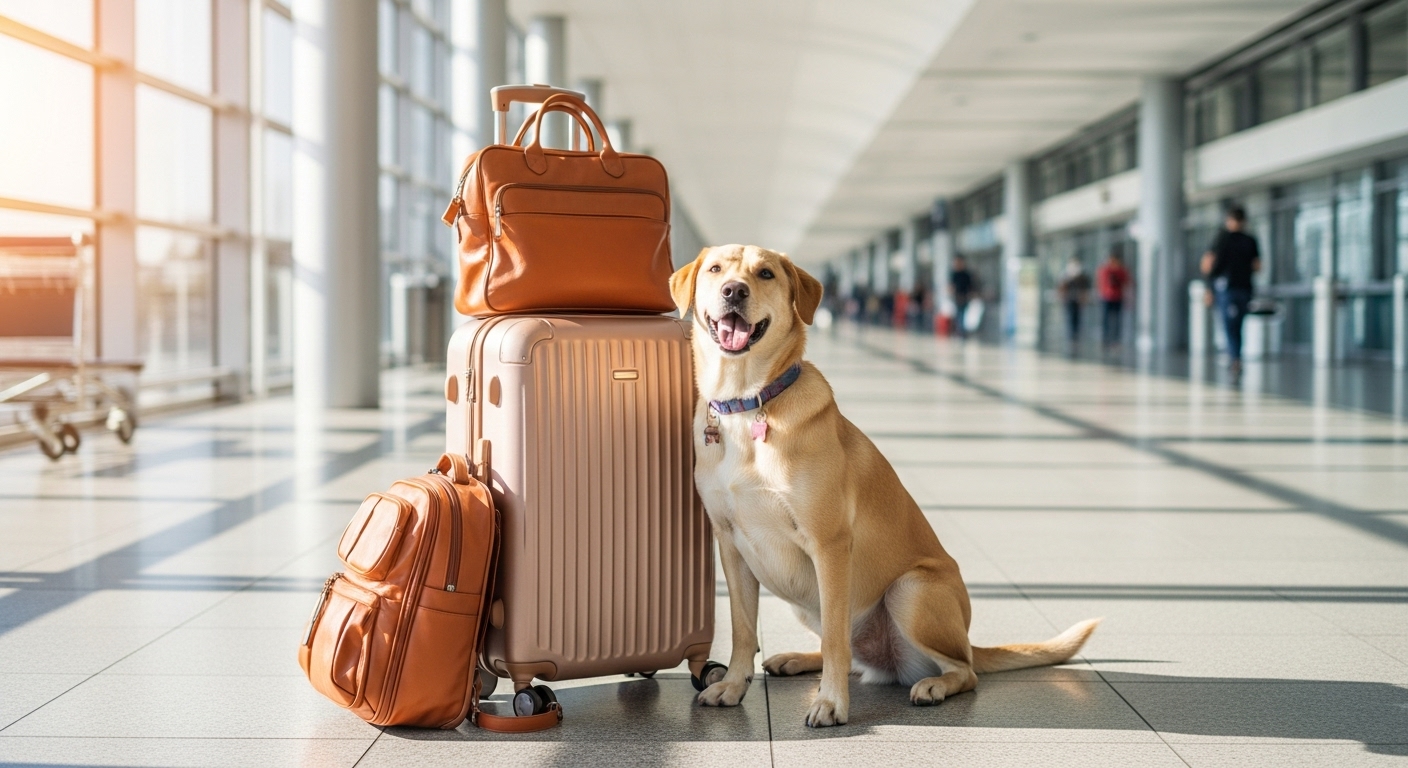Long trips can be stressful for dogs, especially if they aren’t used to traveling. Whether you’re driving across the country or flying to another state, preparation is the first step to keeping your dog calm during long trips.
Start by getting your pet comfortable with the travel carrier or car seat several weeks before departure. Let your dog explore it at home, place their favorite blanket or toy inside, and reward calm behavior with treats. This positive reinforcement helps your dog associate the carrier or car ride with comfort and safety instead of fear or anxiety.
Another essential step is familiarization training. Take your dog on short drives to build tolerance. Start with a few minutes, then gradually increase the duration. If your dog becomes restless, pull over safely, give them water, and let them stretch. Over time, your dog will learn that being in the car doesn’t always mean going to the vet — it can lead to fun adventures too!
Also, ensure your dog is physically prepared for travel. Schedule a vet check-up before your trip to confirm they’re healthy and vaccinated. Ask your vet about calming supplements or pheromone sprays that can ease anxiety.
Lastly, pack a travel kit: food, water, collapsible bowls, leash, waste bags, and familiar items. The scent of home comforts your dog in unfamiliar places, helping them stay relaxed throughout the journey.
Keeping Your Dog Comfortable During the Trip
Once you hit the road, your main goal is to maintain comfort and reduce stress. A calm dog means a safe and enjoyable journey for everyone.
Make sure your dog’s travel environment is secure but not restrictive. A well-ventilated crate or a safety harness attached to the seatbelt can prevent injury and motion sickness. Keep the temperature moderate — neither too cold nor hot — and allow fresh air to circulate.
Frequent breaks are another must. Plan stops every 2–3 hours for short walks, hydration, and bathroom breaks. These pauses not only help your dog stretch their legs but also release built-up energy and anxiety.
During travel, maintain a soothing environment. Play soft music, avoid sudden loud noises, and speak in a calm tone. Dogs are highly sensitive to human emotions — if you remain relaxed, your pet will sense it too.
If you’re flying, choose direct flights whenever possible to minimize stress and waiting time. For road trips, avoid feeding large meals right before departure, as this can cause nausea or discomfort. Instead, feed smaller portions a few hours before leaving.
You can also bring interactive toys or chew items to keep your dog busy. Chewing reduces stress and gives them a sense of security.
Most importantly, never leave your dog alone in the car, especially in warm weather. Even with open windows, the temperature can rise dangerously fast, causing heatstroke.
With these steps, you’ll turn a potentially stressful trip into a peaceful experience for both of you.
After the Trip — Helping Your Dog Adjust
The journey doesn’t end when you arrive at your destination. Helping your dog adjust to a new environment is just as important as preparing for the trip itself.
When you reach your hotel, vacation rental, or friend’s house, let your dog explore the surroundings slowly. Keep them on a leash until they feel comfortable and confident. Unpack their familiar items — bed, blanket, or toy — to make the space feel like home. Familiar scents are powerful comfort tools.
Keep routine consistency wherever possible. Feed your dog at the usual times, take walks on a similar schedule, and maintain their bedtime rituals. This structure reassures your dog that everything is under control.
Observe your dog for signs of stress such as excessive panting, pacing, or whining. If they seem anxious, spend extra quiet time together — gentle petting, calm voice, and short play sessions can help them relax.
Travel can also affect appetite and sleep. Allow your dog a day or two to settle before introducing new activities. Once they’re relaxed, you can explore dog-friendly parks, beaches, or hiking trails in your new area.
Lastly, reward calm behavior. Positive reinforcement helps your dog remember travel as a good experience, making future trips easier.
By following these tips, you’ll ensure your dog not only survives long trips — but truly enjoys them.
Keeping your dog calm during long trips is all about preparation, comfort, and emotional support. With patience, consistency, and love, every journey can become a bonding experience instead of a stressful one. Whether it’s a road adventure or a cross-country flight, your dog deserves to travel happy and relaxed — just like you.




